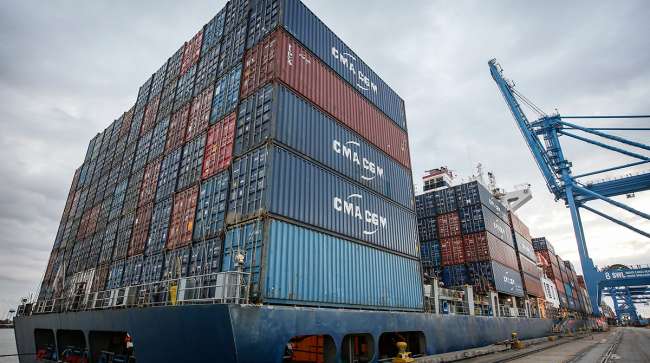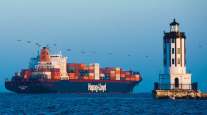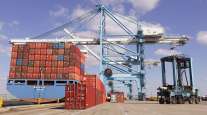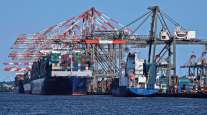US Army Corps of Engineers Endorses Plan to Deepen Lower Mississippi River

A long-discussed plan to deepen the lower Mississippi River by another five feet to accommodate larger ships has won a critical endorsement from the U.S. Army Corps of Engineers, which foresees nearly $110 million in annual net economic benefits to the project.
In signing off on the $238 million project, James Dalton, the Corps’ civil works director, said the project is “economically justified and environmentally sustainable.” He recommended that Congress move ahead with funding. Dalton signed the recommendation Aug. 3.
The deep-draft navigation project would benefit four Louisiana ports that are among the nation’s 15 largest by annual tonnage: the Port of New Orleans; the Port of Greater Baton Rouge; the Plaquemines Port, Harbor and Terminal District; and the Port of South Louisiana, which is centered in LaPlace but extends 54 miles along the river between New Orleans and Baton Rouge.

Together, the ports and commercial facilities within their jurisdictions move more than 500 million tons of cargo a year, including 60% of the nation’s grain, and are connected to 14,500 miles of inland navigable waterways.
Funding for the project will require congressional approval, which is uncertain.
Under the Corps’ recommendation, roughly half of the project’s price tag would be picked up by the federal government, with the state’s Department of Transportation and Development responsible for the rest. In addition to construction costs, the state’s share includes expenses, such as relocating underwater pipelines and cables that cross the river at spots that would be impacted by dredging.
With cargo ships getting larger and the Panama Canal getting wider, the Corps has spent years studying the costs and benefits of the project, which would provide a draft of 50 feet from the Gulf of Mexico upriver to Baton Rouge — nearly 260 miles.
Big-bulk shippers of products like petroleum and grain would likely benefit the most, though an increase in container traffic also would be expected. Trade experts predict that a deeper channel would boost imports of crude oil, iron and gasoline, and exports of corn, soybeans and coal.
Local port officials have long maintained that the extra depth would more than pay for itself in the form of new tax revenue from the increased commerce. All told, the Corps’ study found that on average, the project would generate nearly $110 million in annual net benefits.
As an added benefit, the Corps said, material dredged within 30 miles from near the mouth of the Mississippi River can be used to create roughly 1,460 acres of new marsh habitat.

Edwards
“This is truly a great moment for Louisiana and the thousands of men and women whose livelihood depends upon the Mississippi River,” Louisiana Gov. John Bel Edwards said in a statement. “One in five jobs in Louisiana is tied to our ports, and this project will help to make our world-renowned port system even more competitive, while creating opportunities for manufacturers, growers and producers who rely on our ports up and down the entire Mississippi River.”
The project has gained momentum in recent years because of the multibillion-dollar expansion of the Panama Canal, which opened in 2016.
As a result of that work, the canal can accommodate ships with drafts as deep as 50 feet below the water’s surface. As of now, that’s five feet deeper than what’s available on the lower Mississippi.
Local maritime officials have long argued that the extra five feet of depth would be critical for the sinuous shipping waterway. Each additional foot means ships can carry more cargo, and that means more money.
The Corps is responsible for maintaining the river channel, including dredging it to prevent silting that would hinder ship traffic.
The Port of New Orleans referred questions Aug. 20 to Sean Duffy, executive director of the Big River Coalition. In a statement, Duffy said the project would “include substantive transportation cost savings to the American farmers, job creation throughout the nation’s interior, and increased flood protection of businesses, farms and homes.”
Jay Hardman, the Baton Rouge port’s executive director, could not be reached for comment.
As a candidate in the 2016 presidential campaign, Donald Trump talked about implementing a massive federal spending initiative to upgrade the nation’s infrastructure.
Perhaps in a good sign to its backers, dredging the lower Mississippi to 50 feet was one of three Louisiana-based projects that were highlighted on a widely circulated list of potential infrastructure targets ahead of Trump’s inauguration.
Distributed by Tribune Content Agency, LLC




